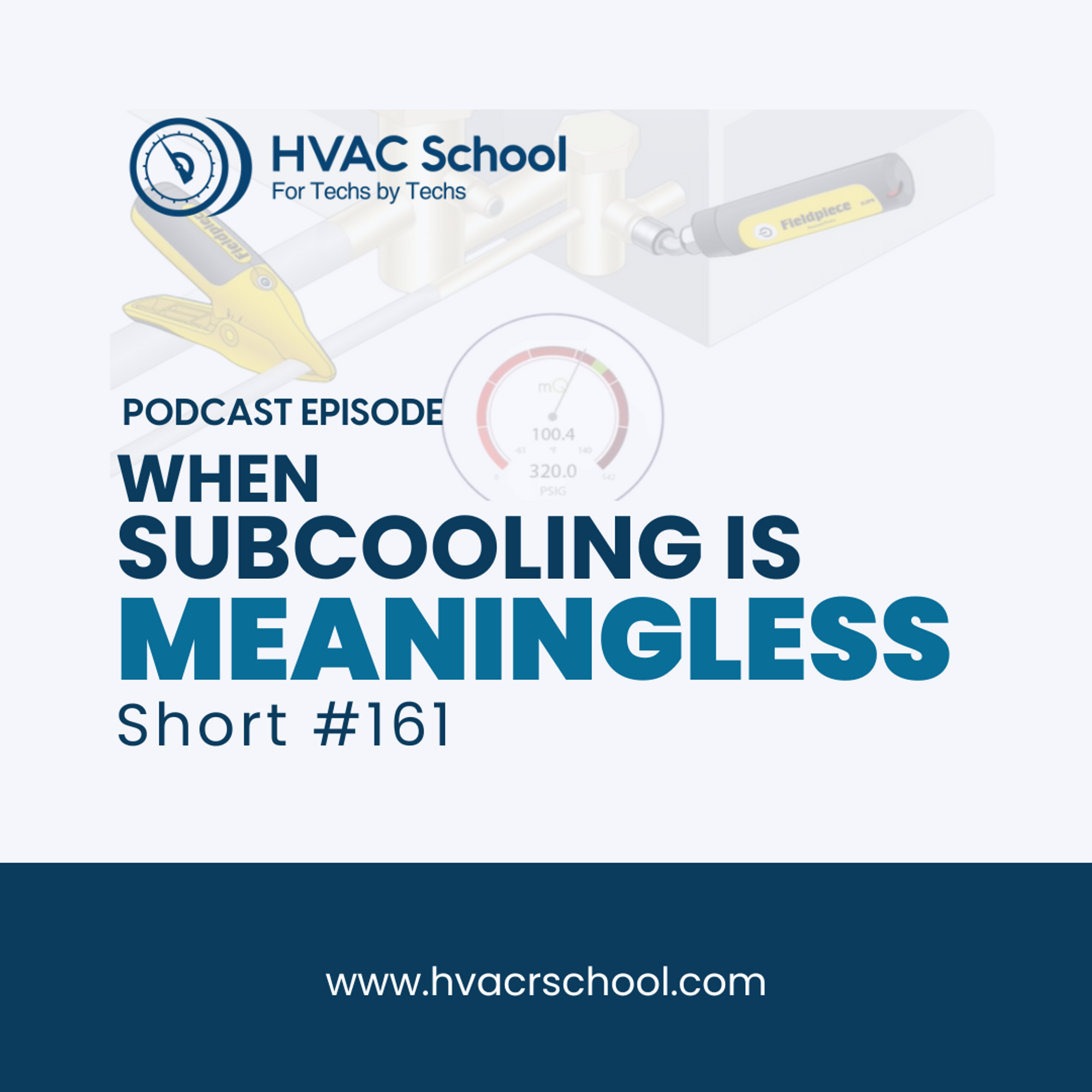When Subcooling is Meaningless – Short #161

In this short podcast, Bryan talks about the times when subcooling is meaningless. It is important to understand subcooling fully before using it as a charging or diagnostic method, particularly in refrigeration systems.
When we need to charge TXV systems in residential HVAC, many technicians rely on subcooling to set the charge. However, refrigeration systems don't quite work the same way; charging a refrigeration system by subcooling may lead you to overcharge the system.
We take subcooling on the liquid line between the condenser and the metering device. The condenser takes superheated vapor and rejects heat. This process turns the superheated vapor refrigerant into a liquid-vapor mixture midway through and subcools the liquid refrigerant at the bottom of the condenser. That liquid “stacks” at the bottom of the condenser. Adding more refrigerant will cause more liquid refrigerant to stack up at the end of the condenser and increase subcooling. These conditions can cause an increase in head pressure.
However, many refrigeration systems have receivers between the metering device and the condenser. Excess refrigerant gets stored in the receiver; it doesn't stack up in the condenser, and it doesn't contribute to additional subcooling. As the liquid line fills and the metering device restricts, the liquid goes into the receiver, not the condenser. Subcooling won't change much until the receiver is full, which is a major problem; receivers should only be up to 80% full, even when pumped down. So, we rely on sight glasses or receiver-level monitors to determine the charge, not subcooling. The goal is to keep the sight glass clear, meaning there is a full line of liquid going to the metering device. (However, sight glasses will also be clear when the system is off or empty.)
Learn more about the HVACR Training Symposium or buy a virtual ticket today at https://hvacrschool.com/symposium.
If you have an iPhone, subscribe to the podcast HERE, and if you have an Android phone, subscribe HERE.
Check out our handy calculators HERE.








Comments
To leave a comment, you need to log in.
Log In